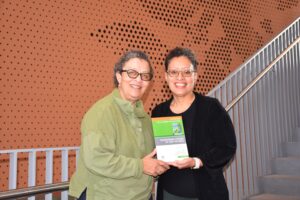
In a groundbreaking development, MIT engineers have devised a novel solution to a persistent problem in bioreactors and other industries: the tendency of cells to adhere to surfaces. This innovation, which utilizes electrochemically generated bubbles, promises to enhance efficiency in processes ranging from carbon capture to pharmaceutical manufacturing. The findings were detailed in an open-access paper published in Science Advances.
Bioreactors are increasingly employed to combat climate change by growing algae and microorganisms that absorb carbon dioxide far more efficiently than trees. However, the sticky nature of cells leads to significant waste and downtime due to necessary cleaning. This issue also affects biofuel production, biosensors, implants, and the food and beverage industry. The MIT team’s approach allows for the detachment of cells from surfaces on demand without harming them, offering a potential solution across various sectors.
Revolutionary Approach to Cell Detachment
The research, led by Professor Kripa Varanasi, addresses a fundamental challenge in industrial processes involving cell cultures. “We wanted to develop a technology that could be high-throughput and plug-and-play,” Varanasi explained, “allowing cells to attach and detach on demand to improve workflow.” The team demonstrated their method in a lab prototype, showing its applicability across different cells and surfaces.
Joining Varanasi are co-first authors Bert Vandereydt, a PhD student in mechanical engineering, and former postdoc Baptiste Blanc. Their mission began with a focus on enhancing CO2 capture and conversion into valuable products, which led to innovations in photobioreactors used for growing carbon-absorbing algae.
Challenges in Current Practices
Photobioreactors require frequent cleaning due to algae blocking light when they stick to surfaces. “You have to shut down and clean up the entire reactor as frequently as every two weeks,” Varanasi noted, highlighting the operational challenges. Similar adhesion issues plague other industries, with varied solutions depending on the need for cell survival. Current methods, such as enzymatic detachment in pharmaceuticals, are time-consuming and generate significant biowaste.
Innovative Use of Electrochemically Generated Bubbles
The MIT team explored the use of bubbles to clear surfaces, finding that generating bubbles directly on surfaces could create shear stress to detach cells. Electric currents split water into hydrogen and oxygen, but previous attempts were hindered by the formation of bleach in cell culture mediums containing sodium chloride.
Vandereydt explained, “The culprit is the anode – that’s where the sodium chloride turns to bleach. We figured if we could separate that electrode from the rest of the system, we could prevent bleach from being generated.” The researchers developed a system with a gold electrode and a special membrane to avoid bleach formation, successfully detaching cells without harm.
Testing and Results
In experiments, algae cells adhered to surfaces were detached using the new method. The team also tested mammalian cells, finding that even sensitive cells could be detached without compromising viability. “Mammalian cells are orders of magnitude more sensitive than algae cells, but even with those cells, we were able to detach them with no impact to the viability of the cell,” Vandereydt stated.
Implications and Future Prospects
This breakthrough could significantly impact industries where chemical detachment methods are harmful, such as pharmaceuticals and food production. “If we can keep these systems running without fouling and other problems, then we can make them much more economical,” Varanasi said.
The team envisions their system being used in pharmaceutical cell culture plates, with electrodes moving robotically between plates, and in algae harvesting systems. “This has general applicability because it doesn’t rely on any specific biological or chemical treatments, but on a physical force that is system-agnostic,” Varanasi explained. “It’s also highly scalable to a lot of different processes, including particle removal.”
While there is still work to be done to scale the system, Varanasi is optimistic about its potential to make algae and other cell harvesting more efficient. “The burning problem of our time is to somehow capture CO2 in a way that’s economically feasible,” he said. “These photobioreactors could be used for that, but we have to overcome the cell adhesion problem.”
The research received support from Eni S.p.A through the MIT Energy Initiative, the Belgian American Educational Foundation Fellowship, and the Maria Zambrano Fellowship.





